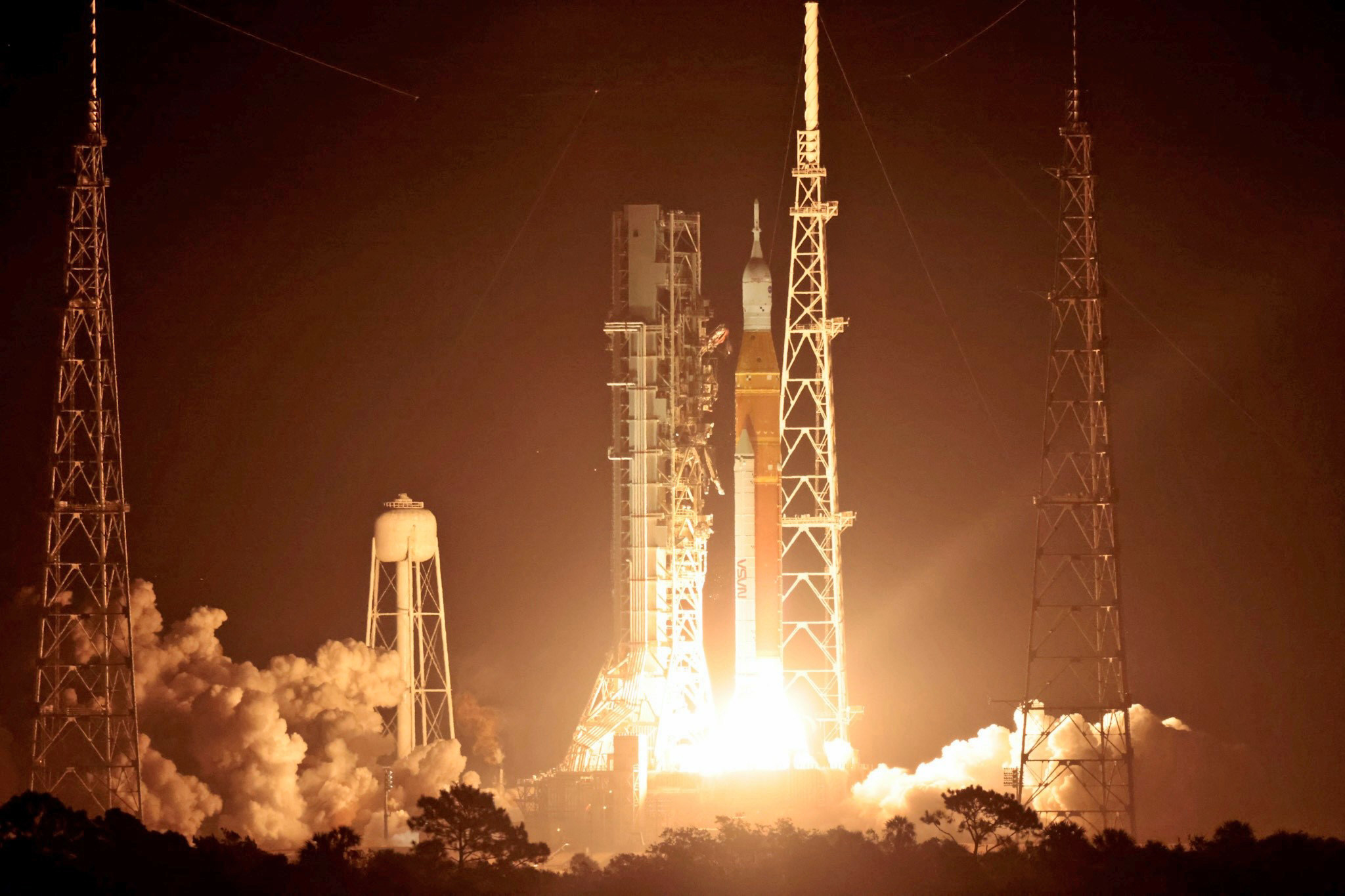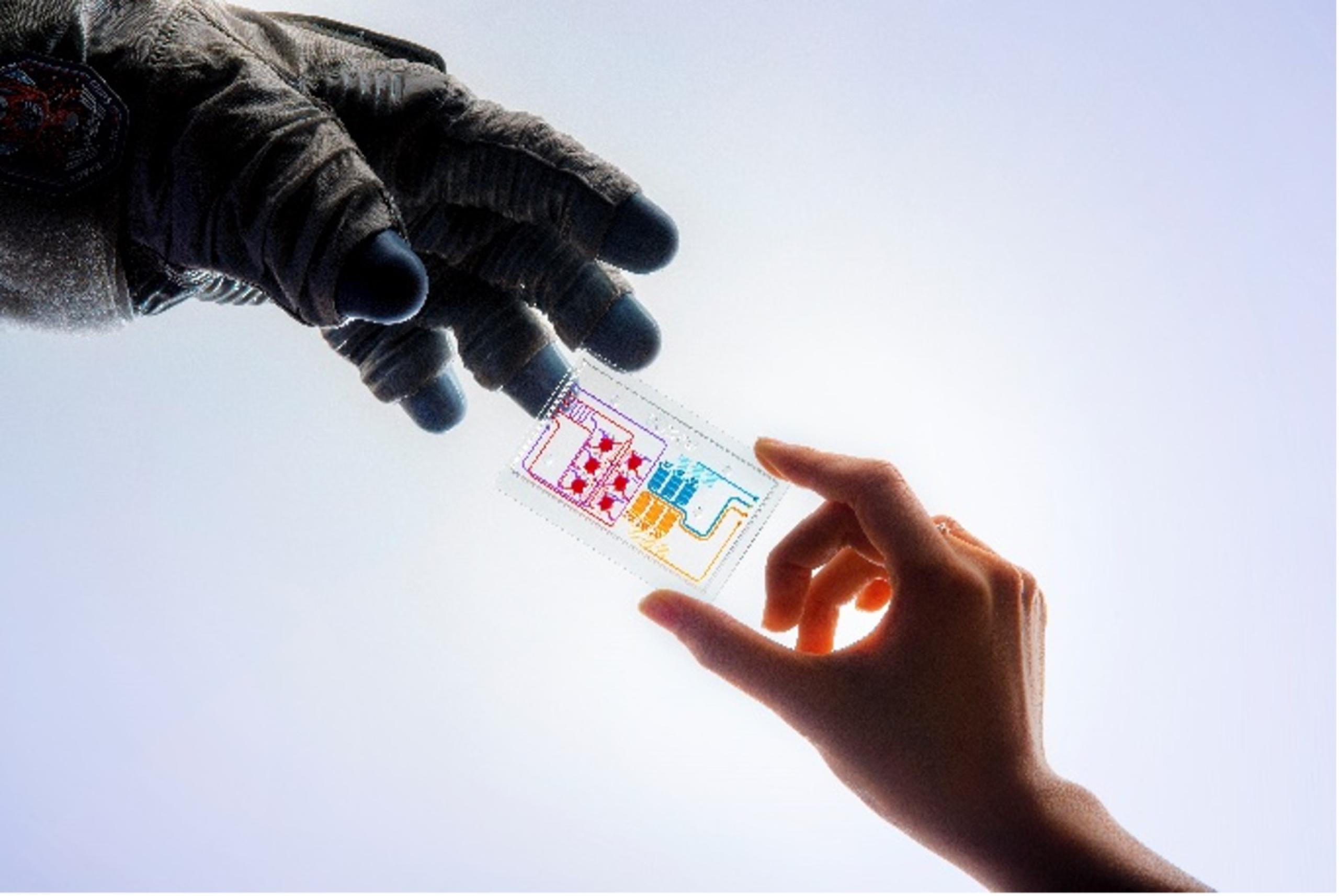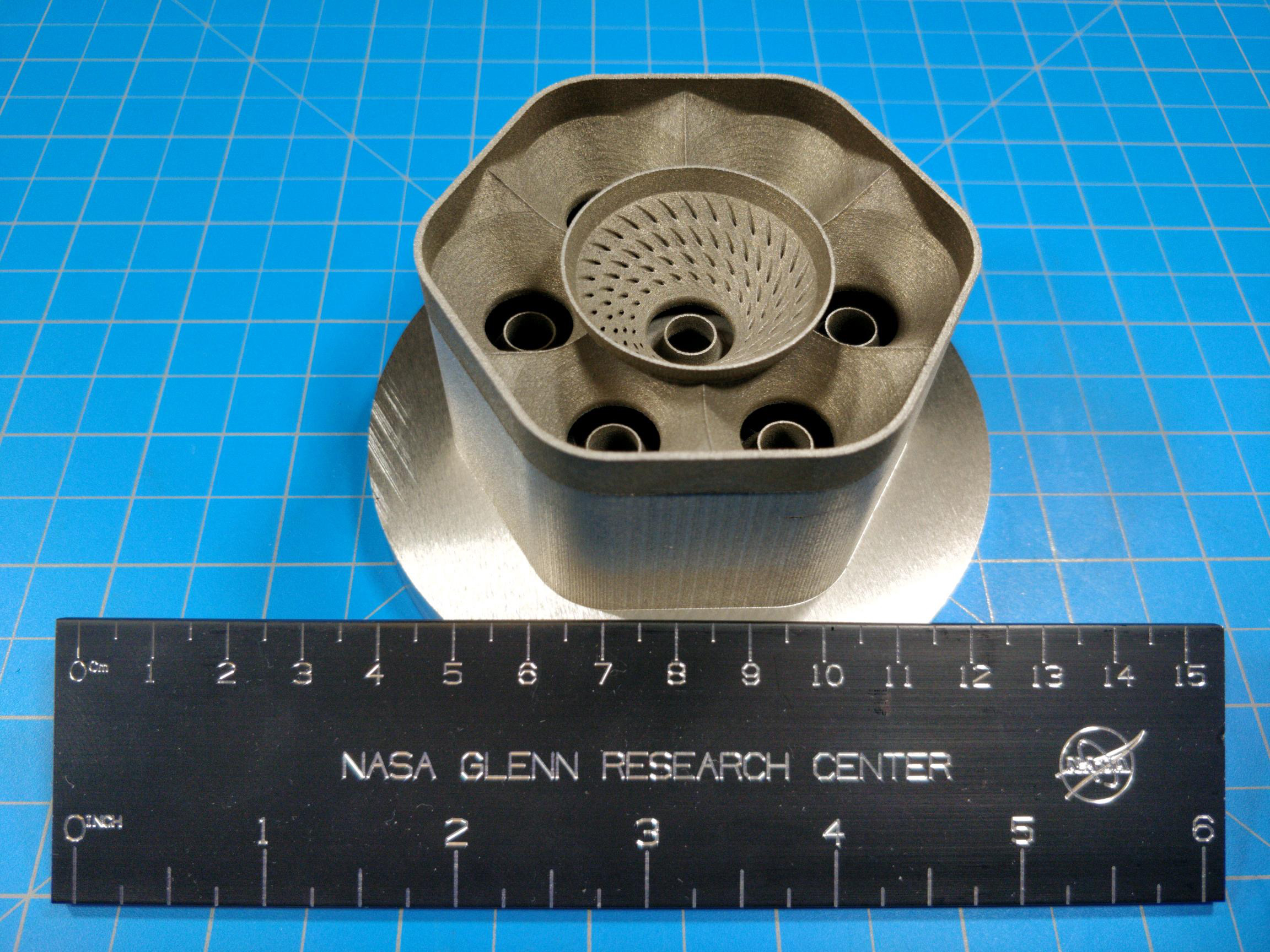With a dedicated multitude of followers worldwide and hundreds of thousands of people flocking to the Space Coast to see Artemis I launch on a 26-day mission around the Moon, NASA can well sum up the last year as “out of this world.” And it truly was, not just because of the mega lunar-bound rocket but also thanks to numerous technologies going to space, new commercial partnerships, and progress in many of the space agency’s programs.
As far as groundbreaking missions and technologies are concerned, there were plenty of accomplishments in 3D printing for space. Here are some of the most significant steps forward that NASA has taken in the last twelve months.
Preparing for lunar exploration
After years of delays and billions in cost overruns, NASA’s mega Moon rocket lifted off out of Port Canaveral on November 16, 2022, carrying an uncrewed Orion spacecraft 280,000 miles (450,000 km) from Earth. This first Artemis mission used four shuttle-derived RS-25 core-stage engines, built and upgraded by Aerojet Rocketdyne (NYSE: AJRD) with numerous 3D printed components that collaborate towards reducing the engine’s overall production costs by nearly 35% while maintaining performance, reliability, and safety. Additionally, two solid rocket boosters made by Northrop Grumman (NYSE: NOC) provided more than 75% of the vehicle’s thrust during the first two minutes of flight. Like the RS-25 engines, the boosters are modified heritage component designs from the shuttle program and benefited from additive manufacturing to make them compatible with the orbital carrier.
With Artemis, NASA will eventually land the first woman and first person of color on the Moon. But before any crewed missions can land on the Moon (around 2025), the agency has plans to develop the technologies that will be needed on the lunar surface, among them the availability of in-situ resource utilization (ISRU) so humans can survive using local resources. With that in mind, NASA engaged universities in 2022 through its annual Breakthrough, Innovative, and Game-Changing (BIG) Idea Challenge. This time, the goal of the student-led teams is to design a metal production pipeline on the Moon, including metal extraction from lunar minerals, forming materials for AM, and testing and qualifying 3D printed infrastructure for use on the Moon.

NASA’s Orion spacecraft launched aboard the agency’s Space Launch System (SLS) rocket on Nov. 16 as the first Artemis mission to the Moon. Image courtesy of Lockheed Martin/NASA.
Science fiction a reality
NASA is known for advancing capabilities for space exploration, tapping entrepreneurs, researchers, and innovators across the country for solutions that will enable missions for decades to come. From launching space missions to demonstrating advanced technologies to supporting the development of early-stage concepts, 2022 highlights include a joint solicitation to extend the lifespan of 3D tissue chips and futuristic ideas like custom 3D printed spacesuits and a swarm of 3D-printed swimming micro-robots that could explore ocean worlds like Enceladus, Europa, and Titan.
In partnership with multiple agencies, NASA aims to advance 3D tissue chips by funding nine contracts that will extend tissue viability and physiological function to a minimum of six months (currently, 3D tissue chips are only viable for about a month limiting their use. By extending tissue viability, researchers can test acute and chronic exposures to drugs, radiation, environmental hazards, infection, and microgravity, to name a few. One of the most critical aspects of the proposition is enabling human spaceflight in deep space. In addition, 3D tissue chips can model diseases and help determine personalized medications for individuals who embark on an uncharted journey.

2019 University of Pennsylvania/Children’s Hospital of Philadelphia’s lung-bone marrow chip. Image courtesy of NASA.
Other futuristic concepts involve a grant received by Texas A&M University in College Station for 3D printing spacesuits on the go. For this proposal, engineer Bonnie Dunbar will evaluate AM as one of the tools that could help manufacture the spacesuits rapidly and cost-effectively. Aside from 3D printing, she believes other technologies could make the cut, like human body 3D scanning, automated 3D garment manufacturing, digital twins, Computer-Aided Design (CAD), and model-based engineering.
Exploration is the plan
To advance sustainable aviation, NASA has been working with its partners and the private sector. Together they are developing and testing new green technologies, like a new metal alloy known as GRX-810, that can be used for applications including the insides of aircraft and rocket engines. Developed using a 3D printing process that uniformly disperses nanoscale oxides throughout the material, GRX-810 can endure temperatures over 2,000 degrees Fahrenheit and survive 2,000 times longer than existing alloys.

A turbine engine combustor (fuel-air mixer) 3D-printed at NASA Glenn is an example of a challenging component that can benefit from applying the new GRX-810 alloys. Image courtesy of NASA
This year, NASA has been working to educate and inspire new audiences. For example, the agency hosted a Twitter Spaces with science experts who discussed how space imagery is an experience people can read, touch, and hear via alternative text, rich image descriptions, tactile panels, 3D printed models, tactile plates, and notifications. It also partnered with Google Arts & Culture to create a digital gallery called “Our Solar System: A 3D adventure through our cosmic neighborhood with NASA,” which includes more than 60 3D models of planets, Moons, and NASA spacecraft. These models, along with a newly released SLS 3D model, are also featured via Google Search results.
Preparing for deep space
Continuing its extensive partnership, NASA and SpaceX successfully launched and returned crew members to and from the International Space Station (ISS) and sent plenty of research and experiments to space, helping maximize science. For example, last October, a crew of five astronauts arrived at the station, promising to spend several months conducting new scientific research in areas such as cardiovascular health and fluid behavior in microgravity to prepare for human exploration beyond low-Earth orbit and to benefit life in Earth.
The team also carried an upgraded BioFabrication Facility (BFF), which successfully printed a partial human knee meniscus and a large volume of human heart cells in 2019. With so much potential, bioprinting technologies could not only help alleviate the organ shortage on Earth but enables the printing of tissue samples in microgravity with higher quality than those printed on the ground.
Other meaningful partnerships and collaborations include deals and grants with pioneering space startup Rocket Lab (NASDAQ: RKLB), additive construction developer ICON, and 3D printing and space company Relativity Space.

NASA Administrator Bill Nelson (left) during an end-of-year meeting with senior leadership at NASA Headquarters. Image courtesy of NASA/Joel Kowsky.
“2022 will go down in the history books as one of the most accomplished years across all of NASA’s missions,” pointed out NASA Administrator Bill Nelson. “There’s so much to look forward to in 2023 too: More stunning discoveries from Webb telescope, climate missions that will tell us more about how our Earth is changing, continued science on the International Space Station, groundbreaking aeronautics developments with the X-59 and X-57 experimental aircraft, the selection of the first astronauts to go to the Moon in more than 50 years, and more.”
As NASA continues to inspire the world through discoveries, it is more evident than ever how much the private space industry has grown to become a relevant player in the off-Earth ecosystem that is bound to become one of the most important sectors in the following decades.
Subscribe to Our Email Newsletter
Stay up-to-date on all the latest news from the 3D printing industry and receive information and offers from third party vendors.
You May Also Like
Further Understanding of 3D Printing Design at ADDITIV Design World
ADDITIV is back once again! This time, the virtual platform for additive manufacturing will be holding the first-ever edition of ADDITIV Design World on May 23rd from 9:00 AM –...
3D Printer Maker EVO-tech Reborn as NEVO3D — Once More With Feeling
EVO-tech was a 3D printing service and original equipment manufacturer established in 2013 and based in Schörfling am Attersee, Austria. The company produced high-quality material extrusion systems featuring linear bearings,...
3D Systems Brings 3D Printed PEEK Cranial Implant to the U.S. with FDA Clearance
For more than 10 years, 3D Systems (NYSE:DDD) has worked hand-in-hand with surgeons to plan over 150,000 patient-specific cases, and develop more than two million instruments and implants from its...
CDFAM Returns to Berlin for Second Annual Symposium
The second CDFAM Computational Design Symposium is scheduled for May 7-8, 2024, in Berlin, and will convene leading experts in computational design across all scales. Building upon the first event...































